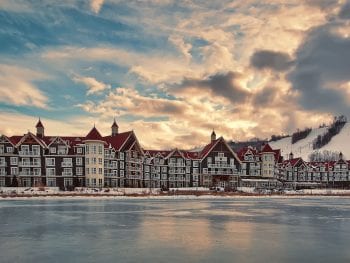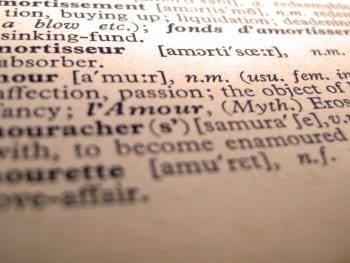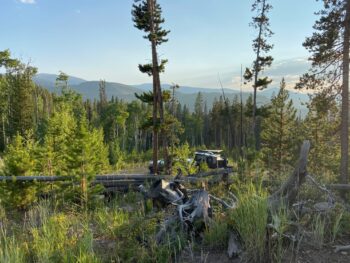For travelers who are looking to relax in nature, camping is an extremely affordable way to stay in Canada. And there are locations around Canada where you can camp for free too. This is pretty much a summer option though, so keep that in mind.
Where To Go Camping in Canada

Canada is actually the world’s second-largest country, meaning camping is varied and abundant throughout its entirety. Its northern location above the United States grants it all four seasons, so like other similar climates, summer is the peak season for campgrounds.
With a diversity of options and long summer days, the Great White North is a worthy destination for any adventurer. Both RVs and tent campers will find plenty of options between Canada’s ten provinces and three territories.
Summer Camping

There’s no better time to camp in Canada than during the summer. No matter where you are in the country, you’re in store for long days and endless outdoor activities. Being on the water is one of the most enjoyable options during the warmer months, so the west and the east coasts are both great choices. The west coast of British Columbia (and BC in general), is a fan favorite.
Those coming from the US who don’t want to drive too far into Canada should consider southern Alberta, home to the famous Banff National Park. For reference, it takes roughly five hours to get from Glacier National Park in Montana to Banff in Alberta.
In much of the popular parts of this country, the weather won’t be terribly different from the northernmost parts of the US. While the Canadian side of the border usually is a little colder than the nearest US state, the difference isn’t too stark. Banff National Park, for example, is only about 10 degrees cooler than Glacier National Park.
While packing layers is a must, summer temperatures in the southern section of provinces like Alberta and British Columbia (BC) hover in the mid-60s to mid-70s. Popular spots in the eastern part of the country, like Algonquin Provincial Park in southern Ontario, also tend to get up to the mid-70s.
Few Canadian cities get above 80 degrees Fahrenheit, even in the summer. Windsor, Ontario (just across the river from Detroit) is the warmest city in Canada, with an average high of 83 degrees in July. As a general rule, the closer you are to the US border, the warmer the average temperatures.
Fall Camping

Just like in summer, sticking close to the US-Canada border is ideal during the fall. Even in Vancouver, a city known as one of the most temperate spots in the country, October highs are in the mid-50s. Of course, that’s better than much of Canada, which makes southern British Columbia a prime spot for fall camping.
Keep in mind autumn starts earlier in the more northern spots and the higher elevation spots. By early September some leaves are already turning colors and the season is pretty much wrapped up by the of October, even in the warmer southern destinations. Your best bet for fall foilage is the warmer coaster spots like Vancouver.
Canada still has a fair amount of late-season camping open in October and November. Ontario, for example, has plenty of fall camping choices. After November, your options are going to get pretty limited, though a few provincial parks are open year-round. Algonquin Provincial Park is open year-round and one of the best places to see fall colors in the country.
For those willing to brave the cold, the Rocky Mountains of Alberta have impeccable fall colors; arguably the best in the country. While daytime temperatures are usually manageable, nighttime lows are almost guaranteed to drop below freezing every day.
Some of the best fall colors are in Banff National Park. Banff is open year-round, though visitor centers go from being open 12 hours a day to a traditional 9:00 am-5:00 pm after September 5th.
Winter Camping

This isn’t exactly the time to head to Yukon Territory. Four-season campers are going to be limited on where they camp (outside of the backcountry and crown land), but winter camping is available in certain provinces.
The coasts are going to be the best, with British Columbia and New Brunswick offering the most comprehensive options for winter camping spots. Prince Edward Island (just east of New Brunswick) also has very few campgrounds.
Outside of experienced winter campers, most travelers should either wait until spring or stay in established campgrounds on the coasts of Canada. British Columbia is going to be the (relatively) most moderate option.
The southern section of BC, especially near Victoria and Vancouver, holds some of the warmest spots in the country, though precipitation levels are highest this time of year. Both cities stay above freezing almost the entire year, making the areas friendlier to beginner winter campers and winter RV travelers.
Spring Camping

Early spring is basically the exact same as winter. The farther north (or higher in elevation) you go, the more snow. Therefore, staying lower and farther south is ideal for all but the most ardent adventurers.
One of the best options for spring travelers through is the British Columbia hot springs route. Some of the most popular hot springs are in southeastern BC and into Alberta, in proximity to Banff National Park and the ever-popular Revelstoke. These five Calgary hot springs are a great place to start. In the southwest, Vancouver and the surrounding areas have a similar set of thermal springs to enjoy.
This is also a terrific time to beat some of the crowds at popular spots or spend time at less-trafficked provincial and national parks. Note that many of the established campgrounds don’t open until the beginning of May at the earliest, even though the parks themselves may be open year-round. Even so, consider Grassland National Park, Forillon National Park, or Pacific Rim National Park Reserve.
Parks Canada Sites in Canada

Parks Canada, the Canadian equivalent to the United States National Park Service (NPS), operates 48 sites throughout the country. 38 of them are designated as national parks, and 10 of them are national park reserves.
National park reserves are similar to national parks, with the one exception being that reserves have unresolved land claims. You can still visit reserves, and they’re on the way to becoming traditional national parks, but the park’s borders have not been fully established yet.
Those heading to Canada for its national parks should prioritize these 10 when making their travel plans.
- Banff National Park
- Cape Breton Highlands National Park
- Jasper National Park
- Pacific Rim National Park Reserve
- Fundy National Park
- Yoho National Park
- Waterton Lakes National Park
- Kluane National Park and Reserve
- Prince Edward Island National Park
- Bruce Peninsula National Park
Provincial Forests in Canada

Canada has more forest land than almost any country in the world. However, only 8% of Canada’s forests is legislatively protected by its federal government. Canada doesn’t have a direct equivalent to the United States Forest Service in the same way it does with Parks Canada and the NPS.
Forests here tend to be run by their respective provinces and territories, with a small area reserved in each, similar to how Parks Canada reserves certain land. Visitors to Canada should keep these 10 provincial forests on their agenda.
- Great Bear Rainforest – British Columbia
- Alberta Mountain Forests – Alberta Rocky Mountains
- Maymont 5 Natural Area – Saskatchewan
- Elk Glen – Manitoba
- Happy Valley Forest – Ontario
- Angell Woods – Quebec
- Crowsnest Pass – Alberta
- Green Mountain Nature Reserve – Quebec
- Boughton Island – Prince Edward Island
- Boreal Forest – Newfoundland
Best Free Camping in Canada

If you aren’t a Canadian citizen, free camping can be tough to find. Most of the free camping in Canada is on “crown land,” which actually covers around 90% of the country. However, non-residents will need a permit (issued provincially, not nationally) that allows them to free camp.
Costs tend to be fairly nominal, so you can still save significant money by getting a permit to camp on crown land. It’s important to know that since these are issued provincially, the permits will have slightly different costs and regulations throughout the 10 Canadian provinces.
The one exception to these rules is British Columbia. British Columbia has a network of Recreational Sites (mostly free, but not exclusively) for campers to use. The roads to get to these sites aren’t the smoothest, but each site is going to vary. You won’t need a high clearance 4×4 to access all of them (at least in the warmer months), but it could help.

Alternatively, much of Canada’s hike-in backcountry camping is free. Of course, you leave the conveniences of car or RV camping behind, but you can save money and get great views.
In a pinch, Canada’s overnight parking situation tends to be pretty similar to that of the United States. You can spend the night in rest stops (if they don’t have ‘no overnight parking’ signs, of course), truck stops, Walmarts, and certain private businesses.
Canada Provincial and Public Parks

The direct US state park equivalent here is Canada’s provincial parks, of which the country has hundreds. While you could travel throughout the entire country visiting the provincial parks, it’s usually best to work through the best national parks in one or two provinces at a time. When deciding which provinces to visit, start with these 10 popular provincial parks.
- Joffre Lakes Provincial Park
- Spray Valley Provincial Park
- Garibaldi Provincial Park
- Cypress Provincial Park
- Mount Seymour Provincial Park
- Elbow-Sheep Wildland Provincial Park
- Algonquin Provincial Park
- Dinosaur Provincial Park
- Killarney Provincial Park
- Mount Assiniboine Provincial Park
RV Resorts and Unique Stays

Tourism in Canada is a billion-dollar industry, with 32 million international tourist trips in 2019. As such, there are many options for accommodations throughout the country, ranging in comfort levels. For those looking to get out of the tent or find a unique spot to park the RV for a night, these 10 spots should merit consideration.
- Huttopia Sutton
- The Canyon RV Resort & Campground
- Alabaster Acres
- East Coast Glamping – Nova Scotia
- Imago Village
- Lilac RV Resort
- Springs RV Resort
- Niagara Falls KOA Holiday
- Bel Air Tremblant Chalet Rentals
- Revelstoke RV & Cabin Resort
With more tree cover than almost any country in the world, it’s easy to head out into the forest anywhere in Canada. Though it’s not a year-round destination for most travelers, the warmer months here are comfortably cool (in most places) and characterized by long sunny days.








